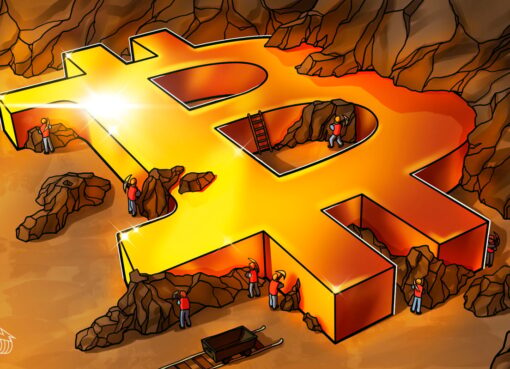To many of us in and around crypto, this time feels different. Tokenization of financial assets has arrived in ways that we haven’t previously seen.
As we charge ahead, it’s important to zoom out, slow down—something our industry is not known for—and take a snapshot of today and where we are going tomorrow.
Stablecoins Are Tokenization’s First Smash Hit
While tokenization is revolutionary for financial markets, its adoption to date has been evolutionary. First, we had stablecoins as a more efficient means of payment. Then we had tokenized money market funds as a more efficient store of value.
What’s next? Structured credit coupled with private funds. As with previous technological waves of adoption, tokenization will come slowly and then all at once. Buckle up: we are about to enter the vertical slope of the S-curve.
Since the last crypto market cycle in 2021, stablecoins have demonstrated clear product-market fit. With more than $250 billion in circulating supply, stablecoins continue to demonstrate long-term demand and utility. That includes Tether and USDC for cross-border payments through companies such as MoneyGram, Stripe, PayPal, and Felix; overseas dollar access in emerging economies and those with weaker currency regimes such as Nigeria, Venezuela, Turkey, and others; and as the key trading pairs for crypto trades including Bitcoin and Ethereum. Regulatory clarity, particularly passage of the GENIUS Act in the U.S. covering stablecoins, can only accelerate this trend. The outsized demand for Circle’s stock following its IPO is another positive sign.
Tokenized money market funds bring a technological and financial upgrade for storage of value on-chain. Market leaders including BUIDL, BENJI, ONDO, and others have shown there is clear demand for the risk-free rate onchain.
That means not only as a collateral and treasury instrument, but also as a stablecoin substitute for crypto-native players that need fiat-denominated liquidity. While the initial versions offer hybrid structures with the fund tokens mirroring traditional transfer agents and off-chain shares, we are beginning to see token-native issuances percolate across the industry.
What’s Next for Tokenization?
Given that tokenization has demonstrated a more efficient method to move and store value, what parts of the industry are next? To start, we have seen industry leaders tokenize private funds—such as Apollo’s ACRED, Hamilton Lane’s tokenized fund with Republic, multiple on-chain funds offered by WisdomTree, and others—that have begun to show utility through transparency, DeFi lending, and liquidity improvements.
The value that tokenization is bringing today to different fund structures only scratches the surface of what is possible, but as DeFi and TradFi overlap more and more, utility is likely to take off.
Structured credit is an ideal candidate for tokenization. Traditionally, it can be complex, opaque, involve multiple counterparties, and can be comparatively expensive to issue and operate. Smart contracts not only streamline and automate debt servicing of a loan pool, for example, but also follow a preprogrammed waterfall for each investor tranche.
Couple that with instant settlement within the structure and the cost basis can drop substantially. And, because the structure is on-chain, we won’t have the lack of transparency that plagued the financial system in 2008. At the issuer’s discretion, holders of on-chain structured credit products could see the performance of the underlying in real time, 24/7.
This transparency is not only transformative for regulators to better monitor underlying risks, but it also increases collateral acceptance by standardizing and providing more information to lenders.
This combination of value and information will mean a more liquid secondary market for these assets as well. While larger traditional institutions can offer some of these benefits—such as transparency or their own secondary marketplaces—tokenization has the potential to bring this all together and standardize it beyond today’s walled gardens.
Tokenizing Equities
Discussion around tokenizing equities has taken off in 2025. Though companies, including INX and Backed, have tokenized stocks before, regulatory discussions with Security and Exchange Commission’s Crypto Task Force have hastened the adoption timeline. Superstate, Kraken, and we at Galaxy have all announced stock tokenization initiatives to continue to push the industry forward.
While the industry has made progress, several challenges lie ahead. The US still lacks the stablecoin and market infrastructure bills that are needed—though the GENIUS’s passage in the Senate is a notable step forward. Solving KYC/AML remains a barrier holding the technology back from adoption at scale; private chains are too limiting and public chain structures without adequate KYC/AML are challenging for TradFi to adopt.
Instead, the industry will have to land in the middle, leveraging the benefits of public chains with the regulatory and trust-based KYC policies that our financial system is built on today.
Education on the technology’s potential also remains a hurdle. The industry must continue to highlight material use cases and tangible benefits that tokenization can bring not just to traditional finance but entirely new opportunities and structures that couldn’t exist before.
Takeaways
What should we take away from this time?
First, we have come a long way from the initial bitcoin transactions and ethereum smart contracts that formed a cornerstone of crypto; now, the industry has partnerships with the biggest names in finance, payments, and technology that lead the global economy today.
Second, we are at the bottom of the second inning—we’ve put some points on the board, but this is just the start. Adoption at scale will require a pairing of the revolutionary benefits of this technology with the timeless trust that has been the bedrock of the financial industry since its founding.
This balance of technology and trust is core to achieving the potential of tokenization in finance: to do for value what the internet did for information.




